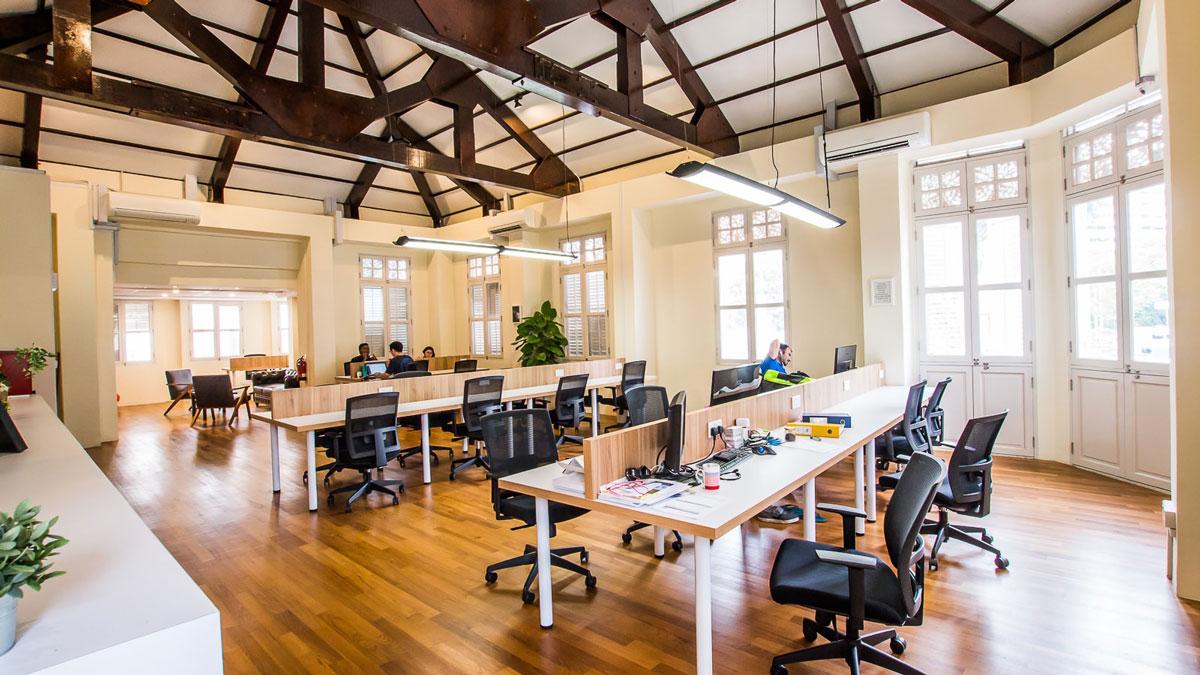While the slowdown in the real estate sector has only deepened in the last few years, new sub-segments in terms of co-working and co-living spaces have emerged and grown over the last few years. According to a joint report released by JLL-Ficci last week, the co-working market already accounts for 12% of the office leasing market in the first quarter of calendar year 2019, up from 8% in 2018.
Co-living, too, offers two to four times higher returns than the traditional residential yield of 2-3%. Sabari Saran asks experts about the scope of growth in these two segments and if it can partially revive the real estate market
Ramesh Nair, Chief Executive Officer and Country Head, JLL India

Demand is making a strong case for the shared rental market
The two new segments, co-living and co-working, have fast grown over the last few years and there is a bright future ahead. The co-living segment is set to offer a business opportunity of₹1 trillion and 5.7 million beds by 2023 from the 2018 levels of₹458 billion and 3.6 million beds. Co-working spaces already have a 12% share in total office leasing. This will continue to rise.
Demand from millennials and rapid urbanization of our cities is already making a strong case for the emergence of a shared rental market. While supply is still a challenge, demand has made the market fascinating for organised operators, owners, landlords and private equity investors.
On the other hand, the co-working segment is now riding a maturity curve. Operators within this market are now offering multiple formats—from entire buildings to built-to-suit co-working offices within conventional workplaces.
However, stakeholders need to address existing challenges such as issues related to data privacy, the conservative approach of property owners and relevant supply across co-working and co-living.
Sanjay Chatrath, Managing Director, North, Colliers International India

Millennial workers driving the rise of co-living model
Co-working spaces have disrupted the traditional work environment today and it will continue to be popular. The co-working sector has emerged as the second-largest sector with 14% share in overall leasing activity in India in 2018. We foresee that the concentration of co-working spaces will intensify in Gurgaon, Bengaluru and Mumbai with occupancy levels reaching to 8 to 9 million sq.ft by 2020. As the flexible workspace segment matures from its current nascent stage, there will be increased strategic alliances and consolidations between owners and operators, with newer models emerging. However, the co-working sector is being more cautious.
On the other hand, co-living has emerged as a new business model providing respite to the residential sector. The driving force behind the rise of co-living spaces are the millennial workforce moving to new cities. Both operators and landlords gain out of this new model, as landlords are able to lease their unsold inventory generating higher yields (3.5-4%) and operators make a profit of 10-20% at the operating level.
Mani Rangarajan, Group Chief Operating Officer, Elara Technologies

Concept is attractive for occupants as well as owners
Co-working spaces have disrupted the traditional work environment today and it will continue to be popular. The co-working sector has emerged as the second-largest sector with 14% share in overall leasing activity in India in 2018. We foresee that the concentration of co-working spaces will intensify in Gurgaon, Bengaluru and Mumbai with occupancy levels reaching to 8 to 9 million sq.ft by 2020. As the flexible workspace segment matures from its current nascent stage, there will be increased strategic alliances and consolidations between owners and operators, with newer models emerging. However, the co-working sector is being more cautious.
On the other hand, co-living has emerged as a new business model providing respite to the residential sector. The driving force behind the rise of co-living spaces are the millennial workforce moving to new cities. Both operators and landlords gain out of this new model, as landlords are able to lease their unsold inventory generating higher yields (3.5-4%) and operators make a profit of 10-20% at the operating level.
Tejas Patil, co-head, Real Estate, Sanctum Wealth Advisors

Co-living gives higher rental yields, loosens inventory
Unsold commercial as well as residential inventory now has a keen patron in the form of co-working and co-living concepts which until recently, were almost non-existent or highly unorganized in India. Now, developers have an option to lease out unsold inventory to organized operators who are more than happy to offer competitive yields. I expect more developers joining hands with startups.
The rules of the game, however, still need to be set by the regulators. Eventually, signs of support to the real estate market will be seen in the medium to long term as this fledgling segment slowly matures.
Investors can look at such opportunities from a cash flow perspective since the leases tend to be long term. Co-living as an asset class, provides much higher rental yields of 8-10% as compared to the traditional 1.5-3% on residential properties with the possibility of an upside.
Co-working also has already seen support from global as well as domestic investors who are keen to participate, create a portfolio and then exit through a real estate investment trust listing.
_PH_Banner_(Desktop)(1200x180px).png)
.jpg)
.jpeg)


.jpg)



.jpg)
.jpg)
.png)

.jpg)
.jpeg)
